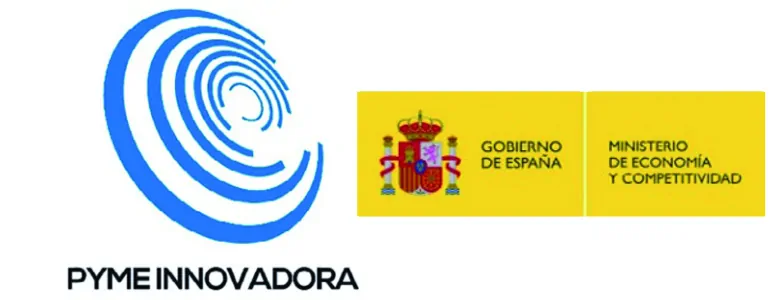
HORIZON EUROPE

 European
European
Expected Outcome:Projects are expected to contribute to all of the following outcomes:
Beyond state of the art asset-level models for critical infrastructures will allow for a better assessment of adaptation optionsPublic authorities will be enabled to compare different adaptation approaches on the basis of a model information system on critical infrastructureAn analysis of gaps in European data regarding the assessment of direct[1] and indirect[2] economic consequences of damages to critical infrastructures. Scope:This topic relates to the Mission’s first objective: preparing and planning for climate resilience and the need for a better understanding of climate change related risks.
To fully comprehend climate change related risks, information on assets is necessary. Asset-level modelling requires combining meteorological/hydrological hazard models with information on assets (their location and ideally their construction costs and quality, as well as historical loss data). Assets can be publicly or privately owned infrastructure, including critical infrastructure, as well as natural and land areas or housing areas. This topic addresses the provision of...
see more
Expected Outcome:Projects are expected to contribute to all of the following outcomes:
Beyond state of the art asset-level models for critical infrastructures will allow for a better assessment of adaptation optionsPublic authorities will be enabled to compare different adaptation approaches on the basis of a model information system on critical infrastructureAn analysis of gaps in European data regarding the assessment of direct[1] and indirect[2] economic consequences of damages to critical infrastructures. Scope:This topic relates to the Mission’s first objective: preparing and planning for climate resilience and the need for a better understanding of climate change related risks.
To fully comprehend climate change related risks, information on assets is necessary. Asset-level modelling requires combining meteorological/hydrological hazard models with information on assets (their location and ideally their construction costs and quality, as well as historical loss data). Assets can be publicly or privately owned infrastructure, including critical infrastructure, as well as natural and land areas or housing areas. This topic addresses the provision of asset-level information to public authorities, on critical infrastructures.
The proposal should consider the effect of multiple hazards (including complex, cascading and compound disasters) and should develop improved assessment models, including improved model coupling. For instance, coupling hazard, exposure and vulnerability, stemming from sources such as Copernicus and its Copernicus Climate Change Service (C3S)[3], with assessments of impacts and of potential adaptation measures, thereby completely integrating the causal chain from climate stressors to adaptive responses into one unifying modelling framework.
The proposal should consider several critical infrastructures (for example electricity supply, ICT, transport systems) across several regions and how its functioning might be impeded by climate change induced risks. The models developed should include reconstruction costs, the costs of not providing the intended service as well as knock-on effects on other systems. The model should be designed as a decision support tool for public authorities allowing them to assess costs of various adaptation solutions across several regions.
The proposal must demonstrate that it goes beyond state of the art and should identify data gaps and discuss approaches to overcome the data gaps in the future. In particular, the proposal should look at
a) resolution and completeness of data for exposure assessments
b) data on construction costs, construction quality and characteristics (notably protection against extreme weather events) as well as on planned redundancies.
c) data on the use of the infrastructures (for example how many trains, cars or households are served)
The proposals should give due regard to the Commission technical guidance[4] on the climate proofing of infrastructure in the period 2021-2027, notably as regards climate resilience, the climate vulnerability and risk assessment, as well as the identification, economic and technical appraisal, and implementation of relevant adaptation measures.
[1] Costs for re-construction of the damaged asset
[2] Consequences on other systems if a critical infrastructure is not functioning
[3] see https://climate.copernicus.eu/climate-data-sustainable-infrastructure
[4] Commission Notice C(2021) 5430 final of 29.7.2021: https://ec.europa.eu/clima/sites/default/files/adaptation/what/docs/climate_proofing_guidance_en.pdf and https://ec.europa.eu/commission/presscorner/detail/en/IP_21_3943
see less
Consortium characteristics
 :
The aid is European, you can apply to this line any company that is part of the European Community.
:
The aid is European, you can apply to this line any company that is part of the European Community.
characteristics of the Proyecto
Expenses related to personnel working directly on the project are based on actual hours spent, based on company costs, and fixed ratios for certain employees, such as the company's owners.
Payments to external third parties to perform specific tasks that cannot be performed by the project beneficiaries.
They include the acquisition of equipment, amortization, material, licenses or other goods and services necessary for the execution of the project
Miscellaneous expenses such as financial costs, audit certificates or participation in events not covered by other categories
Overhead costs not directly assignable to the project (such as electricity, rent, or office space), calculated as a fixed 25% of eligible direct costs (excluding subcontracting).
Characteristics of financing
Additional information about the call
other advantages
similar aids

| Abierta

| Próximamente

